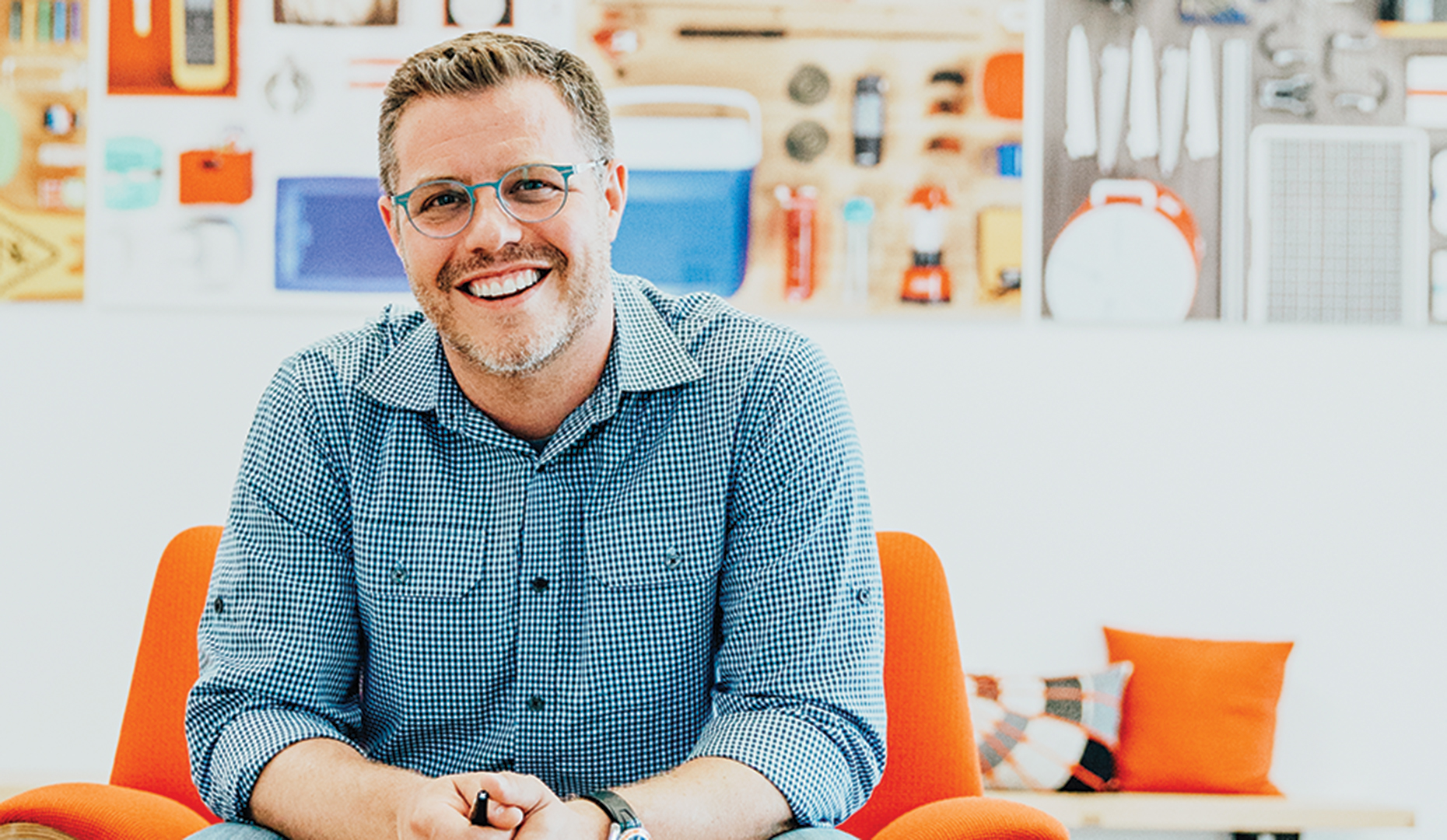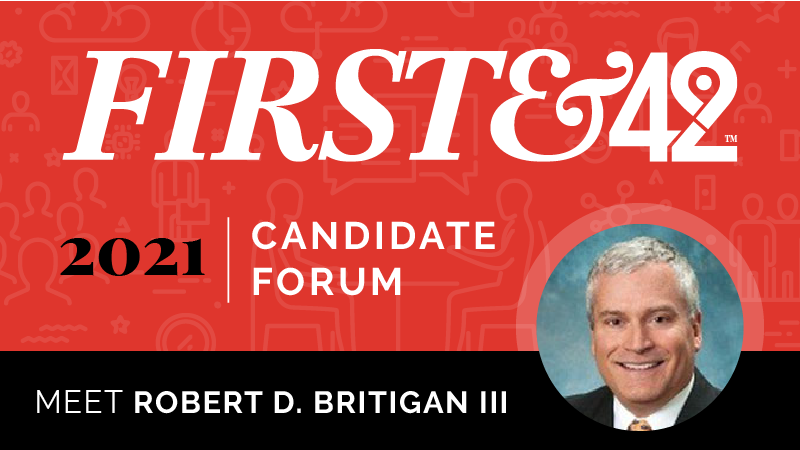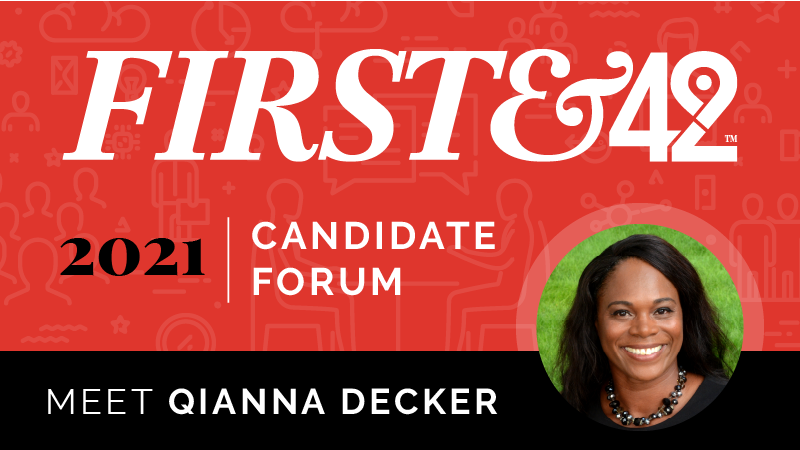We sat down with Paul Martus, principal industrial designer at Newell Brands, for a glimpse at design through his eyes.
What does an industrial designer do?
I truly believe we provide a service—a problem-solving service. We’re part detective, part artist, part futurist. We solve problems through visualization. These problems shape the future and hopefully make lives better.
Why did you decide to become an industrial designer?
When I look back, I think I always was a designer, I just didn’t know what to call myself. As a kid, we made our own props for our stories and games. We made our own toys. We took apart our toys to “improve them.” As I got older, it was the same thinking of innovation, just applied to sports, school, and work.
How does a young industrial design get his or her start?
Creation. (You gradually come to the) understanding that you can alter the objects around you. Then you realize you do it for others, and you can make them happy. Starting off young, you make your parents gifts. They love it. Next, you start making your friends gifts. After that, people see (what you made), and it’s amazing when (other) people ask you to make them something and they’re strangers. Then that’s kind of how you get involved.
Everyone has to start somewhere. What was your first job?
I started with anything entrepreneurial. If it snowed, I shoveled snow. If the grass grew, I cut the grass. Anything to make a buck. I knocked on the neighbors’ doors. Eventually, they knew I was coming so they’d just leave 10 bucks in the mailbox or something.
What is your favorite part about being an industrial designer?
Applying creativity. That’s the one thing that separates us—is being creative—so applying creativity to see something realized and working with others to make or share an idea into something physical.
What skills are important for a successful career in industrial design?
I always say that you have to have an open mind and thick skin.
On having an open mind:
Being able to have a point of view and, in some method, visualize that point of view. Everyone talks about sketching or CAD or whatever, but whatever your method is to visualize that idea, you either need to visually or verbally be able to share your ideas with others. Since others need to be on board with what you’re thinking, you have to win them over by sharing your idea.
On having thick skin:
Every time you do something, you put yourself out there. Even if you don’t take it personally, it’s a representation of what you can do. It’s not a self-portrait, but it’s your best work you’re putting out there. That’s what we all do—put our best work out there—and then someone can come in and say it’s good or bad or bless it or disagree with your thoughts. But, you set the stage to allow them to have that conversation with you, so you have to have thick skin to be able to put your work out there and listen openly to the feedback. I do believe, strongly, that depending on the realm, you are still the author of your design. So, no matter what feedback you get from other people, take it in stride and make the changes if you need to.
What is your favorite creation or project that you have worked on?
The thing is, you get so consumed in the project that you are in today, you believe every project you’re doing at the moment is going to change the world or make someone’s life better.
If you’re working on seats for the airport and you’re in the airport, you’re looking at them. You’re flipping over a chair to see how it’s put together or what it’s made of. If you’re working on recycle containers, it’s amazing how, throughout your day or week and with your family, how much time you spend looking at these objects.
So your favorite project is always the current one?
Always the current one.
What is the biggest lesson you have learned since you began your career?
The biggest lesson would be diligence. And then, only take “no” (for an answer) after the fourth time. After that, go ask someone else, because someone out there has the answer you’re looking for.
In our world, if you’re trying to change a material or change a color of a thread or change a whole system, to get people behind it, you have to keep asking questions. Rarely when you’re a designer are you the main authority of the project. Someone else there knows a lot about coffee or something of interest, so you have to go find the expert.
How do you balance creativity with business?
Balance is the key word. Good design is good business. Good design is being smart from the capital expense to the margin to the usability to the aesthetics.
Who do you view as a master of your craft?
Currently, it’s my peers right around me. I’m constantly blown away by what people can produce. Historically, when I think about school, I have a lot of admiration for William Morris, Harry Bertoia, Marc Newson, and Ross Lovegrove.
Who would you most like to work with?
Anyone willing to try something new. If you’re lucky enough in your career to be able to choose your team, that’s the greatest reward. But if you succeed with that team, that’s the greatest achievement.
What would be your dream project?
The list on this one is very long. It could be architecture, it could be biomed. Anything right now, creatively, like animation and entertainment. I have two young daughters, so I watch a lot of Tinkerbell and animations. They’re so well crafted. They’re just beautiful. Within the entertainment industry, there are no physical boundaries, so you can almost do anything you want to do.
How do you keep your creativity sharp?
You have to find time to recharge the battery and refill the creative flow. You have to go for walks, enjoy family, and enjoy things outside of (work), so that you can give all that you give when you’re in the (creative) role.
To be able to take a break from it is totally key. What’s funny, though, is you never know when it re-hits you. You could be driving in the car—you needed a break, and as soon as you have that break, you’re ready to get back into it. So, you’re driving in the car and you’re thinking about how to solve something. Then, it hits. You have to have the balance and take a break.
If you could be creative in another space, what would it be?
Cooking or the entertainment, humor, laughter, storytelling world.
What advice would you give to an aspiring industrial designer?
Don’t constrain a project too soon (by setting) assumptions in your head before you prove that they’re right or wrong. If you’re working on a project and you put what you think is right too early, or what you think you can or can’t do, you’re not going to solve (the problem) or get anywhere new or innovative.




